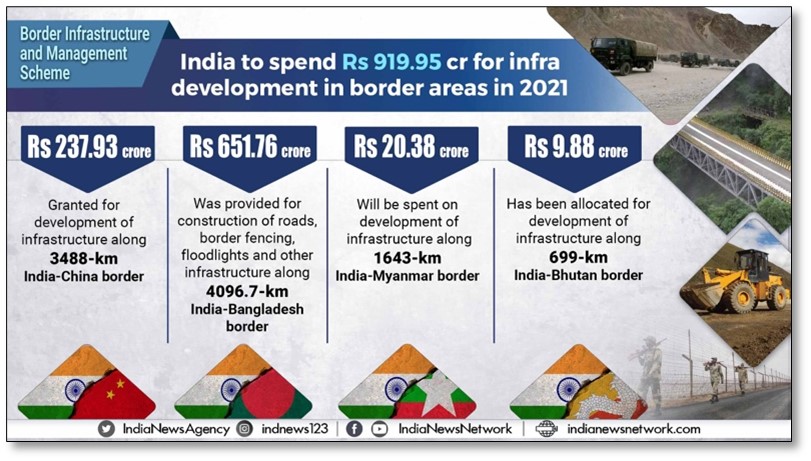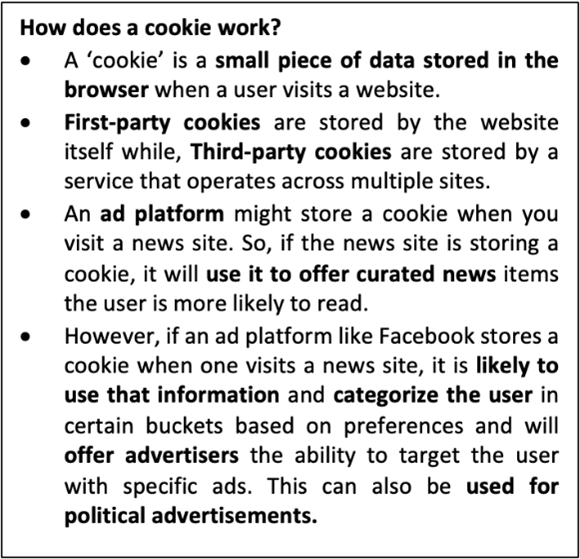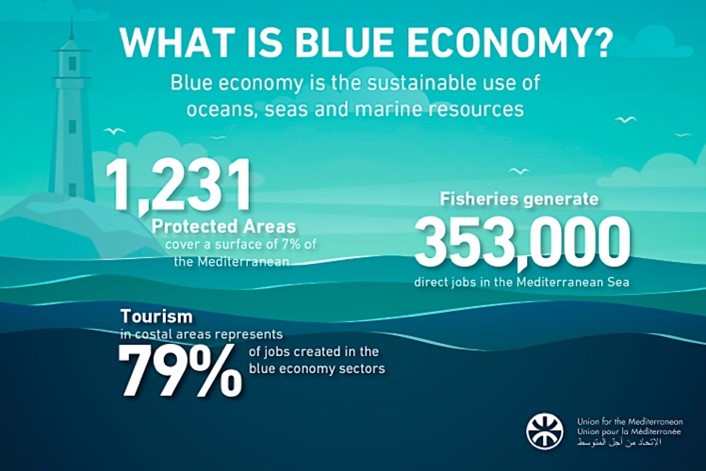Monday, 28th February 2022
National Strategy for Additive Manufacturing
In News
The Union Government has released a policy to boost additive manufacturing in India.
About the News
- The Ministry of Electronics and Information Technology (MeitY) has recently released a National strategy for additive manufacturing (commonly known as 3D printing) with the goal of making India a global hub for design, development and deployment of 3D printing.
- It aims to increase India’s share in global additive manufacturing to 5 per cent and add $ 1 billion to the gross domestic product within the next three years.
What is 3D printing or additive manufacturing?
3D printing is a manufacturing process that creates a physical object from a digital model file. The technology works by adding layer upon layer of material to build up a complete object. The 3D printing process was devised in the 1980s and originally known as ‘rapid prototyping’.
- Working: 3D printing process involves building up layer upon layer of molten plastic to create an object. As each layer sets, the next layer is printed on top and the object is built up. A digital file i.e., G-code files contains ‘coordinates’ to guide the printer’s movements, both horizontally and vertically – also known as the X, Y, and Z axes.
- Application: It has applications including- manufacturers, engineers, designers, educators, medics, and hobbyists alike use the technology for a huge range of applications.
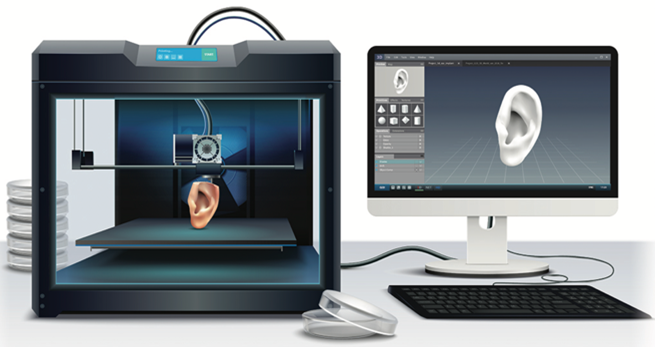
What are the important provisions of the policy?
- Sector targeting: Government to target nearly 50 India specific technologies for material, machine and software, 100 new startups for additive manufacturing, 500 new products by 2025.
- Creation of ecosystem: Establishment of AM centres, talent development, IP creation and funding, partnerships, incentives, innovation clusters, and much more.
- Creation of jobs: Targeted new startups and opportunities are expected to give jobs to at least 1 lakh new skilled workers over the next three years.
- Uniform regulation: Establishment of a dedicated agency, such as a National Additive Manufacturing Centre, to spearhead the national initiative (NAMC)
- Reinforcing ecosystem: enhancing technology Leadership through Talent, R&D, and Supply Chain Development
- Addressing technical challenges: Government to address sector-specific technical challenges in order to make 3D printing economically viable for MSMEs.
Why is it important?
- Global hub: It will leap India into a very important hub for high precision manufacturing.
- Leveraging existing strength: Additive manufacturing plays to the strengths that India has, which is software, electronics, ESDM and artificial intelligence (AI).
- High value employment: It will create local entrepreneurship, technology and intellectual property in 3d printing.
- Security intellectual property: It will help to develop and safeguard India’s AM intellectual property
- FDI: It will help enhancing manufacturing capabilities and encouraging foreign technology manufacturing in India.

For articles related to this topic, refer:
https://edukemy.com/current-affairs/gazette/2021-08-26/global-manufacturing-risk-index-2021
https://edukemy.com/current-affairs/gazette/2021-07-05/technology-innovation-platforms
https://edukemy.com/current-affairs/gazette/2022-01-06/toyconomy-understanding-indias-toy-industry
Sources:
Russia banned from SWIFT
In News: The US and its allies moved to block certain Russian banks' access to the SWIFT international payment system and impose further sanctions on the Russian central bank's international reserves as it continues its military assault against Ukraine.
What is SWIFT?
- The SWIFT system stands for the Society for Worldwide Interbank Financial Telecommunication and is a secure messaging network platform used by banks and other financial institutions to exchange information about global monetary transactions such as money transfers.
- It is important to note that SWIFT doesn’t transfer funds but acts as a secure messaging system that links more than 11,000 financial institutions in over 200 countries and territories, alerting banks when transactions are going to occur.
- The secure messaging system allows banks to honour the payment instructions without question, subsequently helping banks process high volumes of transactions at speed.
- SWIFT was founded in 1973 and is based in Belgium. It is overseen by the National Bank of Belgium, in addition to the US Federal Reserve System, the European Central Bank and others.
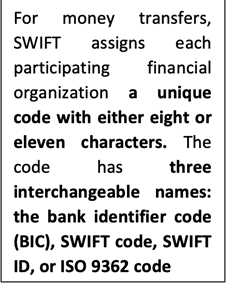
How will SWIFT ban affect Russia?
- Russia will not get any access to financial markets across the world. The ban would make it harder for Russian companies and individuals to pay for imports and receive cash for exports.
- The curbs on Russia’s central bank will prevent it from dipping into its forex deposits to limit the effect of sanctions.
- Moscow has been building up a cushion of foreign currency in the wake of the previous round of sanctions in 2014, with reserves touching a record high of $630 billion in January 2022.
- Targeting only some Russian banks seems to be aimed at both keeping the option of further escalation open, while ensuring that the sanctions have the maximum possible impact on Moscow, but prevent a major impact on European companies dealing with Russian banks for payments for their gas imports.
- The sanctions are intended to spare Russia's oil and natural gas exports.
- Iran and North Korea, two previous targets of SWIFT sanctions, had far smaller roles in the world economy, while Russia, with its enormous petroleum reserves, plays a much bigger role in global trade, and parts of Europe depend on its natural gas.
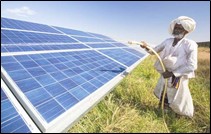
For articles related to this topic, refer:
https://edukemy.com/current-affairs/gazette/2021-12-23/humanitarian-assistance-to-afghanistan
https://edukemy.com/current-affairs/gazette/2021-12-01/joint-comprehensive-plan-of-action
https://edukemy.com/current-affairs/gazette/2021-11-15/image-of-the-day-belarus-poland-border-issue
Sources:
A ‘Green’ jobs Portal
In News
The Ministry of New and Renewable Energy (MNRE) unveiled an online desktop version of a job portal this week, to connect empanelled enterprises with professionals hunting for jobs in the renewable energy sector.
About the News
- The launching of the portal comes in the backdrop of a draft policy framework released by MNRE released earlier that emphasised on “promoting decentralised renewable energy in livelihood applications” or to create job opportunities in the green energy sector.
- These include to employ people in the setting up or operating of solar street lights, standalone street pumps, biogas plants and solar power plants, to name a few.
About the Portal
- The portal works like any site offering information on job openings, except that the jobs listed will be restricted to those from the new and renewable energy sector.
- There are plans to launch awareness about it on employment platforms like LinkedIn, to draw skilled individuals who could work for government projects in this sector.
- The launching of the portal is crucial to boost the sector as the sector created 48 per cent fewer jobs in 2021 than in 2019 according to a report by the SCGJ, Natural Resources Defence Council (NRDC) and the Council on Energy, Environment and Water (CEEW)
- The report also states that:
- the pandemic led to concerns regarding the “re-skilling” of professionals.
- India has potential to create about 3.4 million jobs by installing 238 GW solar and 101 GW new wind capacity to achieve the 500 GW non-fossil electricity generation capacity by 2030 goal.
- Post-Covid recovery efforts by agencies working with the ministry have indicated a narrowed focus on job creation, skill development and community welfare.
- The report also states that:
Challenges in creating green jobs
- Data acquisition to gain insights into the technological potential and employment needs of a region is lacking.
- Most of the jobs created so far are temporary, which vanish at the end of asset construction.
- Estimates shared by the Rewa Ultra Mega Solar Limited earlier had claimed that it employed around 3,000 direct workers and 2,000 indirect ones every day (in 2019), whereas it is currently employing less than 500 skilled and unskilled workers.
- The automation of unskilled workers will keep the workforce away from the sector.
- There is no follow-up data yet that could be relied on to determine the sector’s success in giving jobs.
- Once the portal becomes functional, issues such as monitoring records on the ground, populating the job portal website at a steadfast speed, and identifying the workforce for re-training will crop up.
For more articles related to this topic, refer:
https://edukemy.com/current-affairs/gazette/2022-02-24/green-financing
https://edukemy.com/current-affairs/gazette/2022-02-17/green-energy-corridor
https://edukemy.com/current-affairs/gazette/2022-02-18/rupee-denominated-green-bonds
https://edukemy.com/current-affairs/gazette/2021-06-09/sustainable-public-procurement
Sources:
National Science Day
On February 28 National Science Day is observed every year to mark the birth anniversary of Indian scientist Dr CV Raman. Dr Raman won the Nobel Prize in Physics in 1930 for the discovery of the theory which explained the scattering of light, which came to be known as the “Raman Effect”. In 1921, while returning from London on a steamship, Sir CV Raman observed the ocean for a long time, which made him question this hypothesis. Driven by this curiosity, he investigated the Molecular Diffraction of Light that eventually led him to discover the Raman Effect seven years later in February 1928, along with his fellow scientist KS Krishnan. Today, the Raman Effect is used widely in our daily lives, especially for imaging objects ranging from a DNA strand to your luggage at the airport. The theme for National Science Day 2022 is, 'Integrated Approach in Science and Technology for Sustainable Future'.

Sources:
Russia & Ukraine: A Backgrounderq
In News
The ongoing Russo-Ukrainian War primarily involves Russia, Belarus, and pro-Russian forces on one side, and Ukraine on the other.
Current Situation of the War
- The attacks came as weeks of intense diplomacy and the imposition of Western sanctions on Russia failed to deter Russia, which had massed between 150,000 and 200,000 soldiers along the borders of Ukraine.
- European countries have been preparing for the likelihood of hundreds of thousands of Ukrainians fleeing an assault. EU has promised the toughest financial sanctions the bloc had ever imposed.
- USA has ruled out putting US troops on the ground in Ukraine, claiming that Russia had chosen a premeditated war and promised Russia would be held “accountable”.
- Cutting Russia out of the SWIFT financial system, which moves money from bank to bank around the globe, would be one of the toughest financial steps the UK and USA could take, damaging Russia’s economy immediately and in the long term.
- The US is considering imposing export controls, potentially cutting Russia off from the high tech that, among other things, helps warplanes and passenger jets fly and powers smartphones.
- Russia has put its nuclear forces on increased alert in an unprecedented escalation of tension with the West since the collapse of the Soviet Union.
- Ukrainian president agreed to send a Ukrainian delegation to meet with Russian counterparts on the Belarusian border.

Timeline of Russia- Ukraine Relationship
- 1, 1991: Ukraine Becomes Independent. Shortly after the fall of the Soviet Union, Ukraine voted for independence.
- 5, 1994: The Budapest Memorandum on Security Assurances was signed in late 1994. Ukraine agreed to transfer all nuclear weapons to the Russian Federation, making Ukraine a non-nuclear power.
- All the signatories committed to honoring Ukraine’s sovereignty and its rights to its territory.
- November – December 2004: The Orange Revolution Overturns Election A presidential election between Viktor Yushchenko, a western-oriented candidate, and Viktor Yanukovych, who was supported by Russia, creates a massive controversy. Yushchenko was mysteriously poisoned before the election but was able to recover. By December, protestors were able to force a re-vote, resulting in a victory for Yushchenko.
- April 3, 2008: Russia Fights Ukrainian NATO Membership. Putin allegedly claimed that Ukraine is “not even a real nation-state.” NATO does not offer Ukraine membership.
- November 2013 to February 2014: Euromaidan Protests Prompt Sudden Change in Government: The new leadership commits to orienting Ukraine toward the European Union.
- February 2014 to March 2014: Russia Seizes Crimea, Creating International Outrage.
- April 21, 2019: Volodymyr Zelenskyy defeated the pro-Russia incumbent Petro Poroshenko in a presidential election.
- December 2021: Putin deploys increasing numbers of troops near the Ukrainian border. Putin issues demands to NATO and the United States. Among these demands is that Ukraine never be admitted to NATO – a request rejected by the Biden administration.
- 21, 2022: Russia Recognizes Breakaway Ukrainian Regions (Donetsk and Luhansk) as Sovereign.
- 24, 2022: Russia Launches Full-Scale Invasion of Ukraine
What are Russia’s interests in Ukraine?
- Family ties: Russia and Ukraine have strong familial bonds that go back centuries. Kyiv, Ukraine’s capital, is sometimes referred to as “the mother of Russian cities,” on par in terms of cultural influence with Moscow and St. Petersburg.
- Russian diaspora: Among Russia’s top concerns is the welfare of the approximately eight million ethnic Russians living in Ukraine.
- Superpower image: After the Soviet collapse, losing a permanent hold on Ukraine, and letting it fall into the Western orbit, was seen by many as a major blow to Russia’s international prestige.
- Crimea: Soviet leader Nikita Khrushchev transferred Crimea from Russia to Ukraine in 1954. However, since the fall of the union, many Russian nationalists in both Russia and Crimea have longed for a return of the peninsula.
- Trade: Russia was for a long time Ukraine’s largest trading partner, although this link has withered dramatically in recent years. Prior to its invasion of Crimea, Russia had hoped to pull Ukraine into its single market, the Eurasian Economic Union, which today includes Armenia, Belarus, Kazakhstan, and Kyrgyzstan.
- Energy: Russia has relied on Ukrainian pipelines to pump its gas to customers in Central and Eastern Europe for decades, and it continues to pay billions of dollars per year in transit fees to Kyiv.
- Political sway: Russia has been intent on preserving its political influence in Ukraine and throughout the former Soviet Union.

What do Ukrainians want?
- Russia’s aggression in recent years has galvanized public support for Ukraine’s Westward leanings. In the wake of Euromaidan, the country elected billionaire businessman Petro Poroshenko, a staunch proponent of EU and NATO integration, as president.
- In 2019, Poroshenko was defeated by Volodymyr Zelensky who campaigned on a platform of anticorruption, economic renewal, and peace in the Donbas.
- Despite Ukraine’s push for NATO and EU membership, recent polls indicate that public opinion on these matters remains mixed. While more than half of those support EU membership, around 40 to 50 percent are in favor of joining NATO.
Immediate causes of the current crisis
- Since the Cold War ended, NATO has expanded eastwards by taking in 14 new countries, including the states of the former Warsaw Pact and the three Baltic nations that were once in the Soviet Union.
- Russia saw this as a threatening encroachment towards its borders and continues to allege it was a betrayal of Western promises at the start of the 1990s. However, the US and its allies deny this allegation.
- Ukraine is not a NATO member but has a promise dating from 2008 that it will eventually get to join.
- Since toppling a pro-Russian president in 2014, it has become closer politically to the West, staged joint military exercises with NATO and taken delivery of weapons including U.S. Javelin anti-tank missiles and Turkish drones.
- Kyiv and Washington see these as legitimate moves to bolster Ukraine’s defence after Russia seized the Crimea region in 2014 and provided backing to separatists who are still fighting government forces in eastern Ukraine.
- Russia says Ukraine’s growing ties with the alliance could make it a launch pad for NATO missiles targeted at Russia. Russian President says Russia needs to lay down “red lines” to prevent that.
Pressure on India amid Russia-Ukraine Conflict
- India has been under tremendous pressure because of the conflict, as it may lead to the rise in international crude oil prices, putting a serious burden on the country’s economy.
- In view of its very special ties with Moscow, New Delhi hasn’t criticised Russian actions. It wants a peaceful resolution of the conflict, taking into consideration the legitimate security interest of all the parties to the conflict.
- India has abstained from a procedural vote taken in the United Nations Security Council (UNSC) to call for a rare special emergency session of the UN General Assembly on Russia’s aggression against Ukraine, even as New Delhi welcomed Moscow and Kyiv’s decision to hold talks at the Belarus border.
Conclusion
Five days have passed since the Russian invasion in Ukraine. World leaders have taken various stands on the issue ranging from evacuation proposals to supply of medicines and emergency aid. The UN has condemned the invasion and called for immediate peaceful resolution of the conflict. With Russian economy taking a plunge and rising casualties being reported in Ukraine, the war has cost both the parties heavily. The diffusion of the war or its escalation would depend on the pragmatism of the world order.
We will discuss India’s stance on this crisis in Featured article of the Newsletter of 1st March, 2022.
For articles related to this topic, refer:
https://edukemy.com/current-affairs/gazette/2022-01-31/ukraine-russia-crisis
https://edukemy.com/current-affairs/gazette/2022-02-23/indias-statement-on-ukraine-crisis
Sources:
- Russia Invades Ukraine: A Timeline of the Crisis:
- A simple guide to the Ukraine-Russia crisis: 5 things to know:
- Ukraine invasion: What to know as Putin alerts nuclear force:
- Russia-Ukraine conflict: Past, present and future:
- A historian corrects misunderstandings about Ukrainian and Russian history:
- Ukraine: Conflict at the Crossroads of Europe and Russia:
- India abstains from UNSC procedural vote to call for General Assembly session on Ukraine crisis:
- Not 1st time India abstained in vote against Russia. It’s about Delhi’s own security interests:
- Russia-Ukraine live updates: Kyiv and Moscow prepare for talks:
Mission Ganga
This is image of Indian students being evacuated from Ukraine. Amid the Russia-Ukraine war crisis, the government of India has launched 'multi-pronged' ‘Operation Ganga’ to evacuate our citizens stranded in Ukraine. Foreign Secretary Harsh V Shringla has said the government will bear the complete cost of the evacuation process from Ukraine. Due to the closing of Ukrainian airspace, the Indian evacuation flights are operating out of Romanian capital Bucharest and Hungarian capital Budapest. India is facilitating the evacuation of stranded Indians from Ukraine through its land border crossings with Romania, Hungary, Poland and Slovakia. Under the ‘Operational Ganga’ plan, the first Air India flight carrying 219 Indian evacuees from Ukraine had landed in the Mumbai airport from Bucharest recently.

Sources:
India’s 1st e-waste park
- Context: India’s first e-waste park is being planned in Narela industrial area in Delhi.
- With the increase in use of technology, there is an increase in the amount of e-waste generation which when not handled scientifically and safely will result in many life threatening incidents such as fire, and harmful impact on the health of the residents and waste handlers.
- This new eco-park will be spread across 20 acres and here, recycling, refurbishing, and dismantling of waste will be done in a scientific and environmentally safe manner.
- The park will provide infrastructure, training and tools to operators in the informal sector to groom them as formal recyclers.
- This cooperation with the informal sector will help to ensure availability of e-waste for processing in the formal sector and will contribute to make the formal units economically viable.
- The park will have collection centres across 12 zones to channelise e-waste.
- There will be end-to-end processing of e-waste and zero landfill will be ensured.
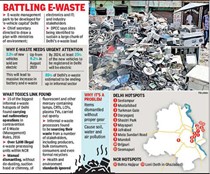
Source:
- Narela to get India’s 1st e-waste park
- Delhi- As e-drive goes full throttle, a park to prevent green mission from going waste
Image source:
Lachit Borphukan
- Context: The President of India has recently inaugurated the year-long celebration of the 400th birth anniversary of Lachit Borphukan.
- Lachit Borphukan was the commander of the Ahom forces and an icon of Assamese nationalism.
- He is known for the battles he faught against the Mughals to protect the Ahom Kingdom from its annexation.
- In 1669, Aurangzeb dispatched the Rajput Raja Ram Singh I to recapture territories won back by the Ahoms (battle of Alaboi which was fought on August 5, 1669 in the Alaboi Hills near Dadara in North Guwahati).
- While the Mughals preferred an open battle, Borphukan relied on his knowledge of the territory and engaged in guerrilla warfare, carrying out assaults on the Mughals. However, over 10,000 Ahoms died in the battle.
- Unlike in Alaboi, where he was forced to fight on land instead of a naval battle, Lachit in Saraighat (another decisive battle) enticed the Mughals into a naval battle where the Ahom forces combined a frontal attack and a surprise attack from behind achieving a decisive victory.
- He lead a troop of soldiers who had expertise in rowing boats, shooting arrows, digging trenches and wielding guns and cannons.
- Currently, Lachit Barphukan’s victory is honoured with a gold medal given every year to the best cadet graduating from the National Defence Academy (NDA).
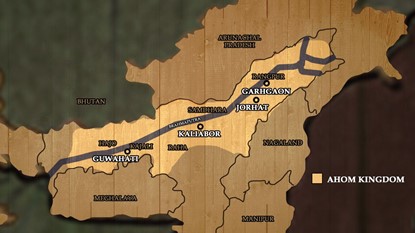
Source:
Picture source:
Engine for Indigenous Stealth Fighter
- Context: DRDO and Safran are likely to develop engine for indigenous stealth fighter.
- With inking of the deal, India and France will collaborate to build a 125KN engine for the indigenous fifth generation Advanced Medium Combat Aircraft (AMAC).
- The initial design of the AMCA started in 2009 and is envisaged as a twin engine stealth aircraft with internal weapons bay and Diverterless Supersonic Intake.
- It will be a 25 tonne aircraft with internal carriage of 1,500 kg of payload and 5,500 kg external payload with 6,500 kg of internal fuel.
- The AMCA will have stealth and non-stealth configurations, and would be developed in two phases — an AMCA MK1 with existing GE414 engine, and an AMCA Mk2 with an advanced, more powerful engine.
- The manufacturing and production of the aircraft is planned through a Special Purpose Vehicle, which will also involve private industry.
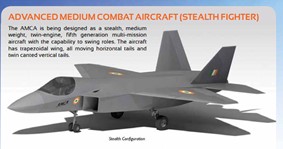
Source:
Picture source:
Co-branded Credit Card for Railway Customers
- Context: The Indian Railways' catering and ticketing arm along with the National Payments Corporation of India (NPCI) and the Bank of Baroda Financial Solutions (BFSL) has recently launched a co-branded credit card.
- ‘IRCTC BoB RuPay Contactless Credit Card' is a specially curated credit card that offers maximum savings to the frequent travellers on the Indian Railways.
- Customers can use this card for other shopping purposes too like groceries and fuel and can use the card to transact at international merchants and ATMs through the JCB network.
- The credit card will offer benefits such as up to 40 reward points (per ₹100 spent) on 1AC, 2AC, 3AC, CC, or EC bookings made through the IRCTC website or mobile app.
- Alongside, a 1% transaction fee waiver for the customers on all their train ticket bookings and up to four complimentary visits per year at partner railway lounges will be provided.
- It will also offer a 1% fuel surcharge waiver across all petrol pumps in India.
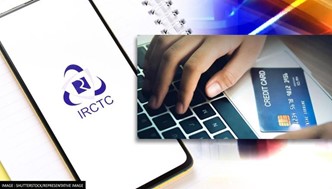
Source:
- IRCTC, NPCI and Bank of Baroda arm launch co-branded credit card for railway customers
- IRCTC, NPCI, Bank Of Baroda Arm Launch Co-branded Credit Card For Railway Customers
Picture source:
India’s journey at CERN has been remarkable: HT
Essence: In the era of Globalisation and multidimensional collaboration in research, partnerships across scientific communities, universities and institutions across countries have driven mega projects across the world both technologically as well as monetarily. India has been involved in many of these ‘Mega Science’ projects such at the Large Hadron Collider (LHC) at CERN, LIGO Project and Square Kilometre Array (SKA) to name a few. CERN has been the cradle of enormous leaps in particle physics or high energy physics, in the last 70 years. Indian scientists have been an integral part of the science, engineering and computing aspects at CERN for more than half a century.
Started with an informal collaboration in 1960’s, India became an Associate member by 2017 and currently is due for renewing its status. India’s participation at CERN reflects a bottom-up approach, which first began through the collaboration of individual scientists. Today it includes, CMS-INDIA (the Compact Muon Solenoid aimed at studying fundamental particles including the Higgs boson, and entities that could make up dark matter) and ALICE-INDIA (which helps understand how the fundamental particles behaved just moments after the Big Bang). India’s participation at CERN is the blueprint for all upcoming mega projects in the country, especially Indian Neutrino Observatory (INO), and many other home-grown projects.
Why you should read this article?
- The article gives you a peak into India’s efforts in the CERN facilities and how it has benefitted the Indian projects.
- The article is also mentioning various home-grown projects which are the offshoots of CERN project.
Source:
Cost and benefits associated with Hydropower in India: ORF
Essence: In recent years the government has been pushing for increasing the share of hydropower in India’s energy mix. Hydropower has proven advantages in reducing global carbon emissions. Its flexibility in dealing with changes in power demand makes it also important for dealing with intermittent nature of power supply by renewable energy sources.
However, experts have pointed out its role in increased flooding in hilly areas and environmental risks associated with it. It is important that while making any decision on pushing hydropower. Government balances its global benefits with costs on local people and ecology.
Why should you read this article?
- To know about arguments in favor and against the increasing percentage of hydropower in India’s energy mix.
- To know the trends in Hydropower production in India
Source:
With Russia-Ukraine conflict, comes inflation challenge: IE
Essence: As per the author, Russia-Ukraine conflict is going to aggravate the inflation situation due to higher gas and oil prices. Inflation erodes the real value of the savings and by preferring growth over inflation, RBI is favouring entrepreneurs thus increasing inequality. Taming food inflation is necessary to control overall inflation as food has a weight of 45% in CPI.
As per the author, stock limits on traders should also apply to wheat and rice stocks with the Food Corporation of India. But the problem is that the economic cost of food grains with FCI is greater than market price, thus unloading of excess stocks will lead to increased food subsidy to the government. The current public distribution system is inefficient and need reforms. The issue price of the food grains needs to be raised and the beneficiaries needs to be limited to only those below the poverty line. The R&D expenditure in agriculture needs to be increased to increase the competitiveness of agriculture to make food cheaper and control inflation.
Why should you read this article?
- To know about the current status of inflation in India and across the world and the ill effects on inflation.
- To understand the need to reform the grain management cum food subsidy system.
- To know about measures needed in the food distribution system to control food inflation.
Source:
Floating School
Background
- Access to education crucial for children. But, various factors disrupt the accessibility to education like social and environmental factors, war ,etc.
- Flooding in Bangladesh leads to closure of schools, disrupting school education.
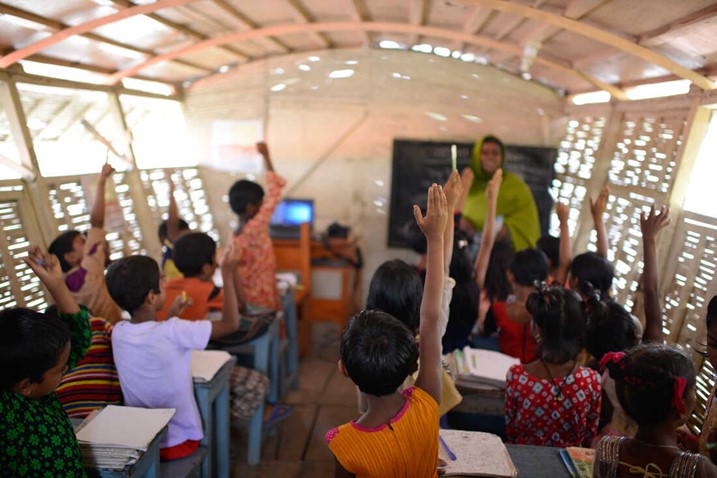
Floating school as a practise in Bangladesh
- Bangladesh, a flood prone country due to its geographical location and climate change induced distress witnesses tremendous floods.
- Along with this, the rise in sea-level, especially during the monsoon seasons, puts a halt to the daily life of the people.
- As students have been unable to go to school, an NGO Shidhulai Swanirvar Sangstha operates schools that can reach the students via boats.
- The floating school are solar-powered, and carry not just the classroom but internet-linked computers and other resources required in the class.
- There are about 23 boats that are operating as classrooms, along with other boats as libraries and health clinics.
- The NGO also teaches children river-based environmental curriculum that helps them understand the environment and conservation at an elementary level.
- Apart from educating the students, the NGO also provides training and educating the farmers about floating farming and flood-resistant cropping techniques.
Quote: This is not a partisan debate; it is a human one. Clean air and water, and a livable climate are inalienable human rights. And solving this crisis is not a question of politics. It is our moral obligation.-Leonardo DiCaprio
Source:
Share the article
Get Latest Updates on Offers, Event dates, and free Mentorship sessions.

Get in touch with our Expert Academic Counsellors 👋
FAQs
UPSC Daily Current Affairs focuses on learning current events on a daily basis. An aspirant needs to study regular and updated information about current events, news, and relevant topics that are important for UPSC aspirants. It covers national and international affairs, government policies, socio-economic issues, science and technology advancements, and more.
UPSC Daily Current Affairs provides aspirants with a concise and comprehensive overview of the latest happenings and developments across various fields. It helps aspirants stay updated with current affairs and provides them with valuable insights and analysis, which are essential for answering questions in the UPSC examinations. It enhances their knowledge, analytical skills, and ability to connect current affairs with the UPSC syllabus.
UPSC Daily Current Affairs covers a wide range of topics, including politics, economics, science and technology, environment, social issues, governance, international relations, and more. It offers news summaries, in-depth analyses, editorials, opinion pieces, and relevant study materials. It also provides practice questions and quizzes to help aspirants test their understanding of current affairs.
Edukemy's UPSC Daily Current Affairs can be accessed through:
- UPSC Daily Current Affairs can be accessed through Current Affairs tab at the top of the Main Page of Edukemy.
- Edukemy Mobile app: The Daily Current Affairs can also be access through Edukemy Mobile App.
- Social media: Follow Edukemy’s official social media accounts or pages that provide UPSC Daily Current Affairs updates, including Facebook, Twitter, or Telegram channels.

